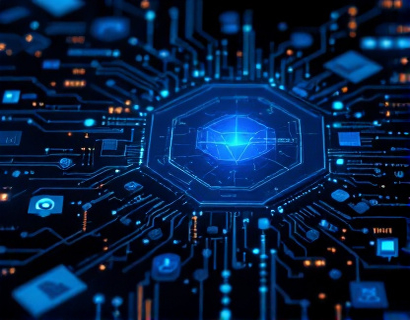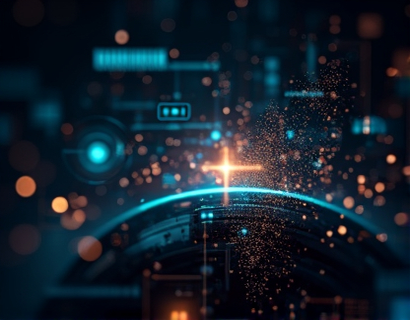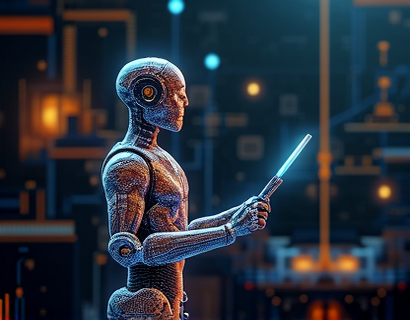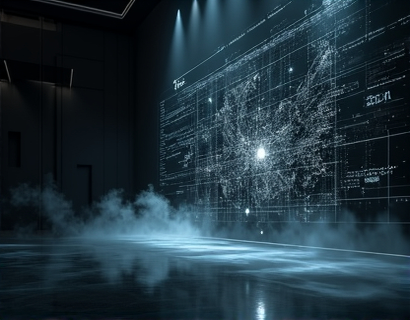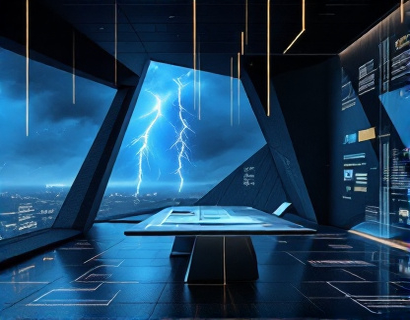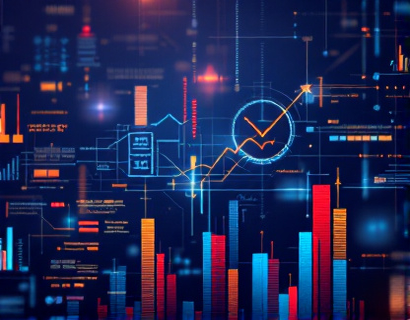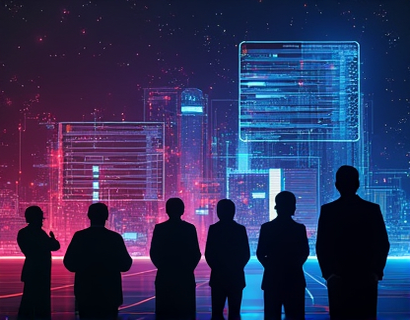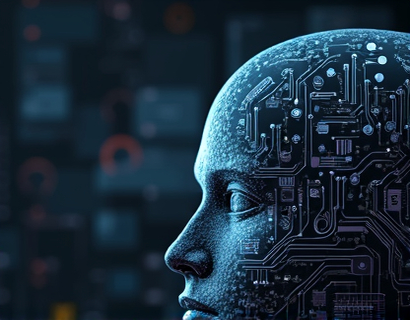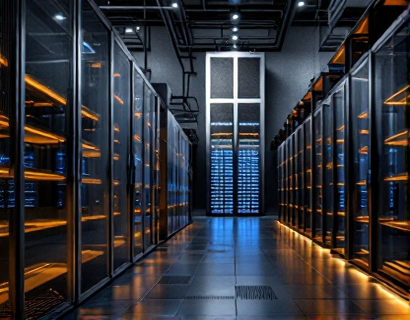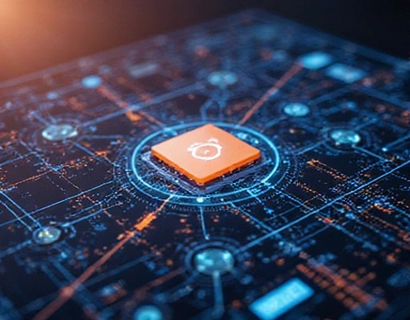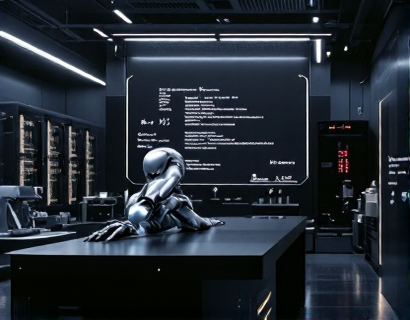Decentralized DAOs: Revolutionizing Web3 Governance with Community Empowerment and Transparency
In the rapidly evolving landscape of Web3, decentralized autonomous organizations (DAOs) stand as a pivotal innovation, redefining how digital protocols are managed and governed. This article delves into the core principles of DAOs, focusing on their role in empowering communities, ensuring transparency, and scaling to meet the demands of a digital future. By exploring these aspects, we aim to highlight the transformative potential of DAOs in shaping a more interconnected and future-proof digital world.
Understanding Decentralized Autonomous Organizations (DAOs)
At their core, DAOs are organizations governed by rules encoded on a blockchain. These rules dictate how the organization operates, including decision-making processes, fund management, and member participation. Unlike traditional organizations, DAOs do not rely on a central authority or hierarchical structure. Instead, they operate through smart contracts, which automate and enforce the organization's rules and policies.
The term "decentralized" emphasizes the distribution of control and decision-making power among members. This decentralization is achieved through token-based governance, where members hold tokens that grant them voting rights. The more tokens a member holds, the greater their influence in proposing and voting on changes to the DAO's governance rules. This token-driven model ensures that power is distributed based on participation and stake, rather than traditional hierarchies.
Community Empowerment through DAOs
One of the most significant advantages of DAOs is their ability to empower communities. In a traditional top-down governance model, decisions are made by a select few, often leading to a disconnect between leadership and the broader community. DAOs break this mold by giving every token holder a voice in the governance process. This democratization of decision-making fosters a sense of ownership and responsibility among community members.
For instance, in a DAO managing a decentralized finance (DeFi) protocol, community members can propose new features, vote on budget allocations, and even elect representatives to oversee specific tasks. This level of involvement ensures that the protocol evolves in line with the community's needs and preferences, rather than the whims of a centralized authority. The result is a more resilient and adaptive system that truly reflects the collective will of its members.
Transparency in DAO Governance
Transparency is another cornerstone of DAOs. All transactions, proposals, and votes are recorded on the blockchain, providing an immutable and publicly accessible ledger. This transparency builds trust among members and external stakeholders, as everyone can verify the organization's activities and decisions. The open nature of DAOs reduces the risk of corruption and mismanagement, as any suspicious activity is immediately visible and traceable.
Moreover, the transparency of DAOs extends to financial management. Budget proposals and expenditures are detailed and transparent, allowing members to track how funds are used. This level of accountability is crucial in maintaining the integrity of the organization and ensuring that resources are allocated efficiently and ethically.
Scalability and Innovation in DAO Governance
As Web3 continues to grow, the scalability of governance mechanisms becomes increasingly important. DAOs are uniquely positioned to address this challenge through their decentralized and automated nature. Smart contracts can handle a large volume of transactions and decisions without the need for intermediaries, making DAOs highly scalable. This scalability is essential for managing complex protocols and large communities, ensuring that governance processes remain efficient and responsive.
Innovation is another key aspect of DAOs. The open-source nature of many DAOs encourages continuous improvement and the integration of new technologies. Community members can propose and implement upgrades to the governance framework, allowing the organization to evolve with the changing landscape of Web3. This iterative process of innovation ensures that DAOs remain at the forefront of governance solutions, adapting to new challenges and opportunities.
Case Studies: Successful DAOs in Web3
Several DAOs have already demonstrated the potential of this governance model in the Web3 space. One notable example is the MakerDAO, which manages the stablecoin DAI on the Ethereum blockchain. MakerDAO's governance allows token holders to propose and vote on changes to the protocol, including adjustments to collateral requirements and interest rates. This decentralized approach has enabled MakerDAO to maintain stability and resilience in the face of market fluctuations.
Another example is the Aragon DAO, a platform for building and governing decentralized organizations. Aragon provides tools for creating custom DAOs, managing token distributions, and facilitating community-driven decision-making. By lowering the barriers to entry for DAO creation, Aragon has empowered numerous communities to take control of their digital futures.
Challenges and Considerations
Despite their numerous advantages, DAOs are not without challenges. One significant issue is the technical complexity involved in setting up and managing smart contracts. Not all community members may have the technical expertise required to participate fully in governance processes. To address this, DAOs can invest in educational resources and user-friendly interfaces to make governance more accessible.
Another challenge is the potential for governance attacks, such as sybil attacks, where an entity creates multiple fake identities to gain undue influence. Implementing robust security measures and consensus mechanisms is crucial to mitigating these risks. Additionally, ensuring legal compliance and addressing regulatory uncertainties is essential for the long-term sustainability of DAOs.
The Future of DAOs in Web3
As Web3 continues to mature, the role of DAOs is likely to become even more prominent. The combination of community empowerment, transparency, and scalability makes DAOs an ideal governance model for the decentralized ecosystem. By fostering a collaborative and inclusive environment, DAOs can drive innovation and ensure that digital protocols serve the best interests of their users.
The future of DAOs also holds the promise of interoperability, with cross-DAO collaborations becoming more common. This interconnectedness can lead to the creation of a more cohesive and resilient Web3 landscape, where different projects and communities work together towards common goals. As more organizations adopt DAO governance models, the potential for transformative change in the digital world becomes increasingly tangible.
In conclusion, decentralized DAOs represent a revolutionary approach to governance in the Web3 era. By empowering communities, ensuring transparency, and scaling to meet the demands of a growing digital landscape, DAOs are poised to play a crucial role in shaping the future of decentralized technology. Embracing this movement can lead to a more interconnected, resilient, and future-proof digital world.



